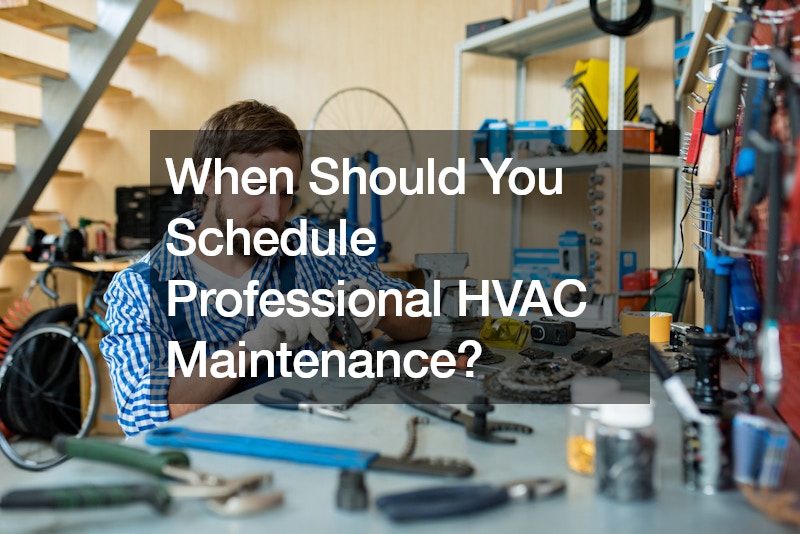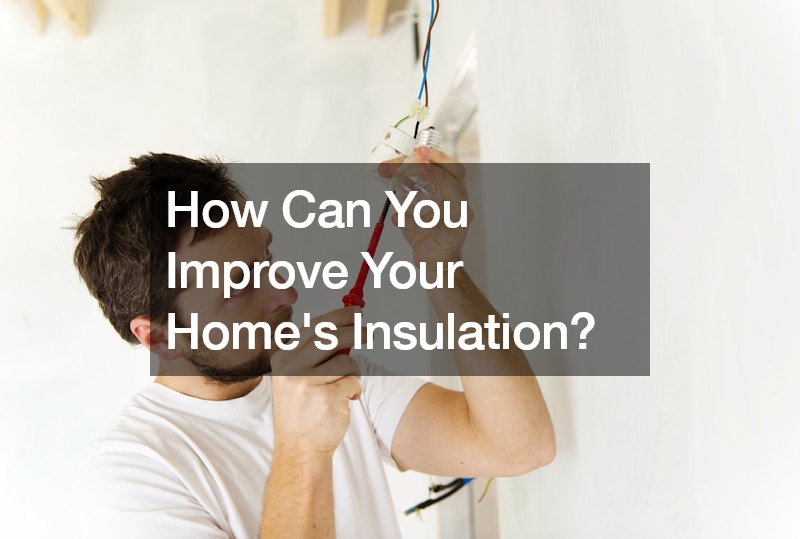Incredibly Easy Ways to Help Your HVAC Run More Efficiently
Maintaining your HVAC system can significantly improve its efficiency, reduce energy costs, and increase the comfort of your home. This article will walk you through ten incredibly easy ways to help your HVAC run more efficiently, addressing the most frequently asked questions by homeowners.

How Often Should You Change the HVAC Filter?
The frequency of changing your HVAC (heating, ventilation, and air conditioning) filter depends on several factors, including the type of filter, household occupancy, indoor air quality, and the presence of pets. As a general guideline:
- Standard Filters: Standard 1-inch fiberglass or pleated filters typically need to be replaced every 1 to 3 months. These filters are relatively inexpensive and are designed to capture large particles such as dust, pollen, and pet dander.
- High-Efficiency Filters: High-efficiency filters, such as HEPA (high-efficiency particulate air) filters or electrostatic filters, can last longer than standard filters, often up to 6 to 12 months. These filters are more effective at trapping smaller particles and allergens, but they may also restrict airflow if not replaced regularly.
- Household Factors: If you have pets, smoke indoors, or have allergies or respiratory conditions, you may need to replace your HVAC filter more frequently to maintain indoor air quality and prevent buildup of pet hair, dander, or airborne contaminants.
- Seasonal Considerations: During peak heating or cooling seasons when your HVAC system is running more frequently, it’s a good idea to check your filter monthly and replace it as needed to ensure optimal airflow and efficiency.
- Manufacturer Recommendations: Check the manufacturer’s recommendations for your HVAC system and filter type. Some systems may require more frequent filter changes for optimal performance and warranty compliance.
Regularly changing your HVAC filter is essential for maintaining indoor air quality, maximizing energy efficiency, and prolonging the lifespan of your HVAC system. A clogged or dirty filter can restrict airflow, reduce system efficiency, and lead to increased energy consumption, higher utility bills, and potential system malfunctions. By following manufacturer recommendations and monitoring your filter regularly, you can ensure proper HVAC system operation and indoor air quality for your home.

When Should You Schedule Professional HVAC Maintenance?
Scheduling professional HVAC maintenance is essential for ensuring the optimal performance, efficiency, and longevity of your heating, ventilation, and air conditioning system. Here are some guidelines from an air conditioning contractor for when to schedule professional HVAC maintenance:
- Seasonal Maintenance: It’s recommended to schedule professional HVAC maintenance at least twice a year, ideally in the spring before the cooling season and in the fall before the heating season. These seasonal tune-ups allow HVAC technicians to inspect, clean, and tune your system to ensure it’s ready to handle the demands of the upcoming season.
- Before Heavy Use: If your HVAC system is about to undergo heavy or continuous use, such as during extreme weather conditions or when transitioning between seasons, it’s a good idea to schedule maintenance to ensure it’s operating at peak efficiency and reliability.
- New Installations: If you’ve recently installed a new HVAC system or replaced major components, such as the furnace, air conditioner, or heat pump, schedule professional maintenance to verify proper installation, address any initial issues, and ensure optimal performance from the start.
- Annual Inspections: Even if your HVAC system appears to be functioning normally, it’s still beneficial to schedule annual inspections and maintenance to catch any potential problems early, prevent costly breakdowns, and prolong the lifespan of your equipment.
- Preventive Maintenance Plans: Many HVAC companies offer preventive maintenance plans or service agreements that include regular inspections, tune-ups, and priority service for members. Consider enrolling in a maintenance plan to ensure consistent, proactive care for your HVAC system throughout the year.
- Signs of Trouble: If you notice any signs of HVAC system problems, such as reduced airflow, strange noises, uneven heating or cooling, or unusual odors, don’t wait until your next scheduled maintenance appointment. Contact a qualified HVAC technician promptly to diagnose and address the issue before it escalates into major furnace repairs or a breakdown.
By scheduling professional HVAC maintenance at the appropriate times and following a proactive maintenance schedule, you can maximize the efficiency, reliability, and lifespan of your HVAC system while minimizing the risk of unexpected breakdowns and costly furnace or AC repairs.

How Can You Improve Your Home’s Insulation?
Improving your home’s insulation is an effective way to enhance energy efficiency, increase comfort, and reduce heating and cooling costs. Here are several strategies to improve your home’s insulation:
- Evaluate Current Insulation: Start by assessing the existing insulation in your home. Check the insulation levels in your attic, walls, floors, and basement or crawlspace to determine if they meet recommended R-values (thermal resistance). Insulation levels may vary depending on your climate zone, so consult with local building codes or energy efficiency guidelines for recommendations.
- Add Insulation to Attic: The attic is a primary area for heat loss and gain in homes. Adding insulation to your attic can significantly improve energy efficiency and comfort. Install fiberglass batts, blown-in cellulose, or spray foam insulation to achieve recommended R-values for your climate zone. Ensure proper ventilation to prevent moisture buildup and maintain attic air quality.
- Seal Air Leaks: Seal gaps, cracks, and air leaks around doors, windows, electrical outlets, and plumbing penetrations to prevent conditioned air from escaping and outdoor air from infiltrating your home. Use weatherstripping, caulking, or foam sealants to seal leaks and improve the effectiveness of insulation.
- Insulate Walls: Depending on your home’s construction, you may be able to add insulation to exterior walls to improve thermal performance. Options include blown-in cellulose, spray foam insulation, or rigid foam board insulation. Consider hiring a professional contractor to assess your wall insulation options and ensure proper installation.
- Insulate Floors and Crawlspaces: Insulate floors above unheated spaces, such as crawlspaces and garages, to prevent heat loss and cold drafts. Install insulation batts or rigid foam board insulation between floor joists or beneath floorboards to improve thermal comfort and energy efficiency.
- Upgrade Windows and Doors: Replace old, drafty windows and doors with energy-efficient models featuring double or triple-pane glass, low-emissivity coatings, and insulated frames. Properly seal and weatherstrip windows and doors to minimize air leakage and improve insulation.
- Install Insulating Window Treatments: Enhance the insulation of existing windows with insulating window treatments, such as cellular shades, thermal curtains, or window films. These treatments help reduce heat transfer and improve energy efficiency while adding privacy and style to your home.
- Consider Insulated Siding: Insulated siding products can improve the thermal performance of exterior walls while enhancing curb appeal. Insulated vinyl, fiber cement, or wood composite siding options provide added insulation value and moisture resistance for your home’s exterior.
By implementing these strategies to improve your home’s insulation, you can create a more energy-efficient, comfortable, and environmentally friendly living environment while reducing utility costs and enhancing overall home performance. Consider consulting with a professional energy auditor or insulation contractor to assess your home’s insulation needs and recommend the most cost-effective solutions for your specific circumstances.
How Does Your Roof Impact Your HVAC System?
Your roof plays a significant role in the performance and efficiency of your HVAC (heating, ventilation, and air conditioning) system in several ways:
- Insulation: A well-insulated roof helps maintain consistent indoor temperatures by minimizing heat transfer between the interior and exterior of your home. Adequate insulation in the attic and roofing materials can prevent heat gain in the summer and heat loss in the winter, reducing the workload on your HVAC system and lowering energy consumption.
- Ventilation: Proper roof ventilation is essential for regulating attic temperatures and moisture levels, which can impact the efficiency of your HVAC system. Ventilation systems, such as ridge vents, soffit vents, and attic fans, help remove excess heat and humidity from the attic space, preventing it from seeping into your living areas and causing your HVAC system to work harder to maintain comfortable temperatures.
- Solar Heat Gain: The color and material of your roof can influence the amount of solar heat absorbed into your home. Dark-colored roofs tend to absorb more heat than light-colored roofs, leading to higher attic temperatures and increased cooling loads on your HVAC system during hot weather. Choosing light-colored roofing materials with high solar reflectance can help reduce solar heat gain and alleviate the strain on your HVAC system.
- Roof Design: The design and orientation of your roof can affect the amount of sunlight and shade that reaches your home throughout the day. Features such as dormers, skylights, and roof overhangs can impact solar exposure and thermal comfort indoors. Properly designed roof overhangs and shading devices can minimize solar heat gain in the summer while allowing for passive solar heating in the winter, reducing the reliance on your HVAC system for heating and cooling.
- Roof Maintenance: Regular roof maintenance and inspections are essential for ensuring optimal performance and longevity. A well-maintained roof free of leaks, damaged shingles, and debris helps preserve the integrity of your home’s envelope and prevents moisture intrusion, which can lead to mold growth and indoor air quality issues. By maintaining your roof in good condition, you can prevent potential HVAC system issues caused by water damage and excessive humidity.
If you’re wondering, where can I find roofers in my area, it may be worth having them inspect your roof. Overall, your roof plays a crucial role in supporting the energy efficiency, comfort, and performance of your HVAC system. By investing in proper insulation, ventilation, roofing materials, and maintenance practices, you can optimize the interaction between your roof and HVAC system and create a more comfortable and energy-efficient indoor environment.

What Are Signs Your HVAC System Needs Replacement?
Several signs indicate that your HVAC (heating, ventilation, and air conditioning) system may need replacement by professional heating and cooling services. Recognizing these signs early can help prevent sudden breakdowns and costly repairs. Here are common signs that your HVAC system may need replacement:
- Age of the System: The age of your HVAC system is a significant factor in determining if it needs replacement. Most HVAC systems have a lifespan of around 10 to 15 years for air conditioners and heat pumps, and 15 to 20 years for furnaces. If your system is nearing or exceeding its expected lifespan, it may be time to consider replacement, especially if it’s experiencing frequent issues.
- Frequent Repairs: If your HVAC system requires frequent HVAC system repair, it may be a sign that it’s reaching the end of its useful life. As HVAC systems age, components wear out, and the likelihood of breakdowns increases. If you find yourself calling for a local AC repair multiple times a year, it may be more cost-effective in the long run to invest in a new system rather than continuing to repair an old one. An AC company can help you determine the right move.
- Increased Energy Bills: A sudden or gradual increase in energy bills could indicate that your HVAC system is losing efficiency. As HVAC systems age, they become less efficient at heating and cooling your home, resulting in higher energy consumption and utility costs. If you notice a significant increase in energy bills despite no changes in usage habits, it may be a sign that your system is struggling to keep up with demand and needs replacement. Contact your local HVAC contractors for a professional opinion.
- Inconsistent Temperatures: If you’re experiencing uneven heating or cooling throughout your home, it could be a sign of HVAC system inefficiency or ductwork issues. Aging HVAC systems may struggle to maintain consistent temperatures or distribute conditioned air evenly throughout your home, resulting in hot and cold spots. If adjusting the thermostat doesn’t resolve the issue, it may be time to replace your system.
- Loud or Unusual Noises: Unusual noises coming from your HVAC system, such as banging, rattling, or squealing sounds, could indicate mechanical problems or worn-out components. While some noise is normal during HVAC operation, persistent or loud noises could signal serious issues that warrant professional inspection. If your HVAC system is making unusual noises, it’s essential to have it evaluated by a qualified HVAC service to determine if replacement is necessary.
- Poor Indoor Air Quality: If you notice an increase in dust, allergens, or indoor air quality issues, it could be a sign that your HVAC system is no longer effectively filtering and circulating air. Aging systems may struggle to remove airborne contaminants, leading to poor indoor air quality and potential health concerns. Upgrading to a new, more efficient HVAC system with advanced filtration features can help improve indoor air quality and comfort.
- Frequent Cycling: Short cycling, where your HVAC system turns on and off frequently, can indicate issues with system operation, such as improper sizing, thermostat problems, or compressor issues. If your system is constantly cycling on and off, it’s not only inefficient but also puts unnecessary strain on components, leading to increased wear and tear. A qualified HVAC technician can diagnose the underlying cause of frequent cycling and recommend whether replacement is necessary.
If you notice any of these signs or other issues with your HVAC system, it’s essential to have it evaluated by a qualified HVAC technician. A professional inspection can help determine the extent of the problem and whether repair or replacement is the best course of action. By addressing HVAC issues promptly, you can ensure optimal comfort, efficiency, and reliability in your home.
By implementing these ten easy strategies, you can significantly improve the efficiency of your HVAC system, lower your energy bills, and ensure a comfortable living environment. Regular maintenance, smart upgrades, and proper home care are key to keeping your HVAC system running smoothly year-round.
